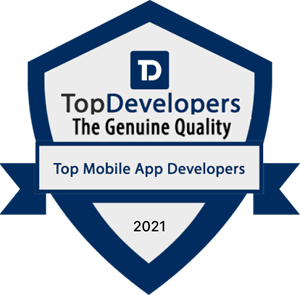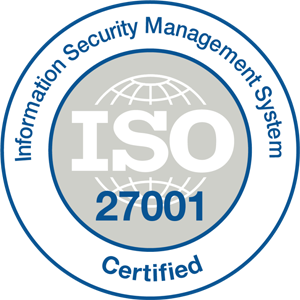Contact Us 
Contact to Discuss with us your project requirements, and we will present smarter ways to get it all done.
We are fast growing offshore custom software development services company serving global startups and agencies.
We offer: business analysts, software engineers, mobile app, fullstack web developers, cloud, quality engineers, and marketers etc.
Hire full time or project basis. Free project management tools, 100% money back guareenty. Cost starting from only $7/ hour!
Request Free Consultation .1000+ cross-functional developers, 5000+ delivered projects for verifiable 3000+ clients is living proof of the same!
















Before another freelance developers hire, Contact us and see how our dedicated client team, consisting business analysts, software engineers, web app & mobile app developers, UI/ UX designers, product marketers, quality engineers and project managers, working in tandem can make your projects a big success, every time.
We are the developer's top sites because, we offer the best tools and resources for our clients and developers. We have a wide range of resources that developers use to improve their skills and knowledge. We also offer a wide range of services to our clients that developers work on and get ample opportunities to enhancing their work. We are always looking for new ways to help our clients and developers, and we are constantly expanding our services offerings!
We empower our software developers to do great work by providing them with the resources and support they need to be successful. We believe that our developers are our most important asset, and we are committed to helping them grow and succeed. We help our software engineers team to enhance work by providing them with the resources, autonomy, and support they need to succeed.
We believe that happy, empowered software engineers are the key to building great software. We also empower our software engineering team to make decisions that are in the best interest of our customers. This means that they are able to take into account the customer's needs and preferences when making decisions about the software. This allows them to create software that is tailored to the customer's specific needs and wants.

Contact to Discuss with us your project requirements, and we will present smarter ways to get it all done.
Discuss, brainstorm, and review proposals. Once confident, hire a dedicated team from us and start the project.
Dedicated Team will do Designing, Coding, Project Management & QA. Use favorite tools to chat, share files, and collaborate.
We do Performance Benchmarking using Testing Automation and deliver the applications on your desired platform.






Our unmatched quality services are recognized by world's top research & review companies like google reviews, trustpilot, clutch, goodfirms, gartner based on our clients and their users feedbacks.











The IT outsourcing industry is growing by leaps and bounds. According to the research from Gartner and other analysts, the global IT outsourcing industry is predicted to reach $600 billion in 2025. If you're still wondering whether it's worth it to outsource your software development needs to a software development agency, here are reasons that make us the best choice.
Whether it's worth it to outsource your software development needs or not depends on a number of factors. If you don't have the internal resources to complete a project, it may be worth it to outsource. Additionally, if you need expertise that you don't have in-house, outsourcing may be the best option. There are a number of risks associated with outsourcing, however. These include the potential for miscommunication, scope creep, and delays. Additionally, you may have less control over the project when you outsource. As such, it's important to weigh the pros and cons of outsourcing before making a decision.
That's why you outsource your software engineers to Developers.dev! With us, you can save money, access a larger pool of talent, and get better engineers than we could hire internally. Offshore outsourcing with us, can save you up to 60% on your engineering costs. You can access a larger pool of talent when you outsource. There are more engineers available to work on your project when you outsource to us, than if you try to hire them all internally. You can get better engineers when you outsource to us. The best engineers in the world, works for companies that offshore outsource developers team. Why? Because they can get paid more. Offshore outsourcing your software engineering needs is the best way to get the most bang for your buck. You'll save money, have access to more talent, and get better engineers.
High-Quality Software Applications
Collaborative, Minimal Risk Cloud DevOps
Cost Saving and Data Protection
Trusted and Experienced Developers
State-Of-The-Art IT Infrastructure
Friendly Development Support









Tags:


OUR SOFTWARE ENGINEERING SERVICES: We understand the importance of safety, security and compliance, and provide critical analysis and design of a wide range of projects. We work in all phases of the software development life cycle (SDLC) to provide comprehensive software engineering services. Our engineers are experienced in developing mission-critical applications using a wide variety of technologies, including Java, Microsoft, Open Source, and Web technologies. We bring a strong understanding of how to apply software engineering practices to solve challenging problems. Our Services: Agile software development, Application development and integration, Business intelligence and data warehousing, Cloud solutions, Information security, Systems engineering, Software testing, Quality assurance, Software maintenance and support.
Developers.Dev specializes in delivering memorable experiences via rich mobile & Web applications with industry solution that are packed with desirable traits like functionality, robustness, and usability. hether you want to use your mobile app as a way to connect with your customers or to streamline organizational processes, we can build the right solution for your needs.











We have extensive array of technology capabilities to offer having certified professional developers for Microsoft technologies, PHP based technologies and frameworks, mobile development technologies, open source technologies, cloud technologies, and even the cutting-edge technologies like artificial intelligence, blockchain, and Internet of Things.
Our software development talent is able to learn your company project quality, data systems, time lines, or platform used across tech, weather simple wordpress site or complex react work. They have worked with top employers, outsourcing businesses who are always on find for best remote, experienced, professionals, doing jobs on complex projects, product services and having high vetting focus on their developer jobs or their us clients companies engineering job with years of experience and full capabilities to see, read, research solution following latest web security, accessibility etc. guidelines.



















Timely Software Product Delivery

Visible Growth and High ROI

Use of Agile/Scrum Methods

95% Client Satisfaction Index
Software outsourcing is the process of contracting out a service or product to be provided by another company. This can be done through a contract, an agreement between two companies, or simply a sale of goods and services. Outsourcerers may use different terms for these different types of outsourcing, but all involve the transfer of control over a certain task or project from one party to another.
The benefits of software outsourcing include cost savings and increased efficiency. Additionally, outsourced projects can often be more reliable and completed on time than those carried out by the original contractor. In order to maximize these benefits, it is important to understand the different types of software outsourcing available and how they can best be used in your business.
Software outsourcing is a process of contracting out the design, development, testing and deployment of software applications. Outsource companies typically provide the software development services while the customer provides the hardware and other resources needed to run the application. The key responsibilities of a software outsourcing company include:
1. Design and develop the software applications
2. Test and deploy the software applications
3. Support and maintain the software applications
There are many types of tasks that can be outsourced by software outsourcing companies. Some common tasks that can be outsourced include: programming, design, development, testing, and management. Outsource companies typically have a variety of options for pricing and delivery times, so it is important to find the right company for the job.
There are many reasons why you might want to outsource your software development needs. Here are some of the most common ones:
You need a team that can handle the complexity and variety of projects.
You need someone who is familiar with different coding languages and tools.
You need someone who can work on multiple projects at once.
Your company does not have the time or resources to do a full-blown project themselves.
There are many software outsourcing services available to businesses. The best way to find the right service for your business is to do a search on Google or other online resources. There are a variety of software outsourcing services that can be used for different purposes, so it is important to choose the service that will fit your specific needs.
Some of the most common types of software outsourcing services include:
1. Project management
2. System administration
3. Database development
4. Application development
5. Web development
6. Custom programming
There are many software outsourcing languages that can be used for various purposes. The most popular ones include Python, Java, and Ruby. They are easy to learn and can be used in a variety of industries.
Some of the benefits of using these languages include:
-They are versatile and can be used for a variety of tasks
-They are easy to learn and can be used in a variety of industries
-They have high readability levels and can be easily understood by non-technical users
There are many software outsourcing skills that can be used in different businesses. Some of the most common ones include:
1. Project management
2. Programming
3. Database administration
4. Web development
5. Graphic design
6. Customer service
Agile software development: We use Agile development methods to deliver high-quality solutions that meet our clients' business needs and budget.
Application development and integration: Our engineers have a proven track record of developing and integrating mission-critical applications, including web applications, mobile apps and cloud applications.
Business intelligence and data warehousing: Our engineers have the knowledge and tools to transform your data into business intelligence that can be used to improve decision-making.
Cloud solutions: Our engineers have the experience and expertise to help you move to the cloud and take advantage of the benefits of cloud computing including scalability, reliability and security.
Information security: Our information security engineers have expertise in designing and implementing security solutions to protect your data and your application.
Systems engineering: Our engineers apply their systems engineering expertise to design and develop complex systems that meet your business needs.
Software testing: Our test engineers have the experience and tools to test your application to ensure it meets the highest standards for quality and reliability.
Quality assurance: Our quality assurance engineers have the experience and tools to ensure your application meets your quality standards.
Software maintenance and support: Our engineers provide software maintenance and support services to keep your application running smoothly.

![]() 2880 Zanker Road, #203, San Jose, CA 95134, USA
2880 Zanker Road, #203, San Jose, CA 95134, USA

![]() Tower place, 3340 Peachtree Rd NE, Atlanta, GA 30326
Tower place, 3340 Peachtree Rd NE, Atlanta, GA 30326


![]() #111, North Bridge Road, Peninsula Plaza, Singapore 179098
#111, North Bridge Road, Peninsula Plaza, Singapore 179098

![]() 142-A, New IT Park, Electronic Complex, Indore - 452010
142-A, New IT Park, Electronic Complex, Indore - 452010

![]() International tower One, 100 Barangaroo Avenue, Sydney NSW 2000
International tower One, 100 Barangaroo Avenue, Sydney NSW 2000

We use cookies on our website to give you best possible experience. (Yeah, I love cookie!)